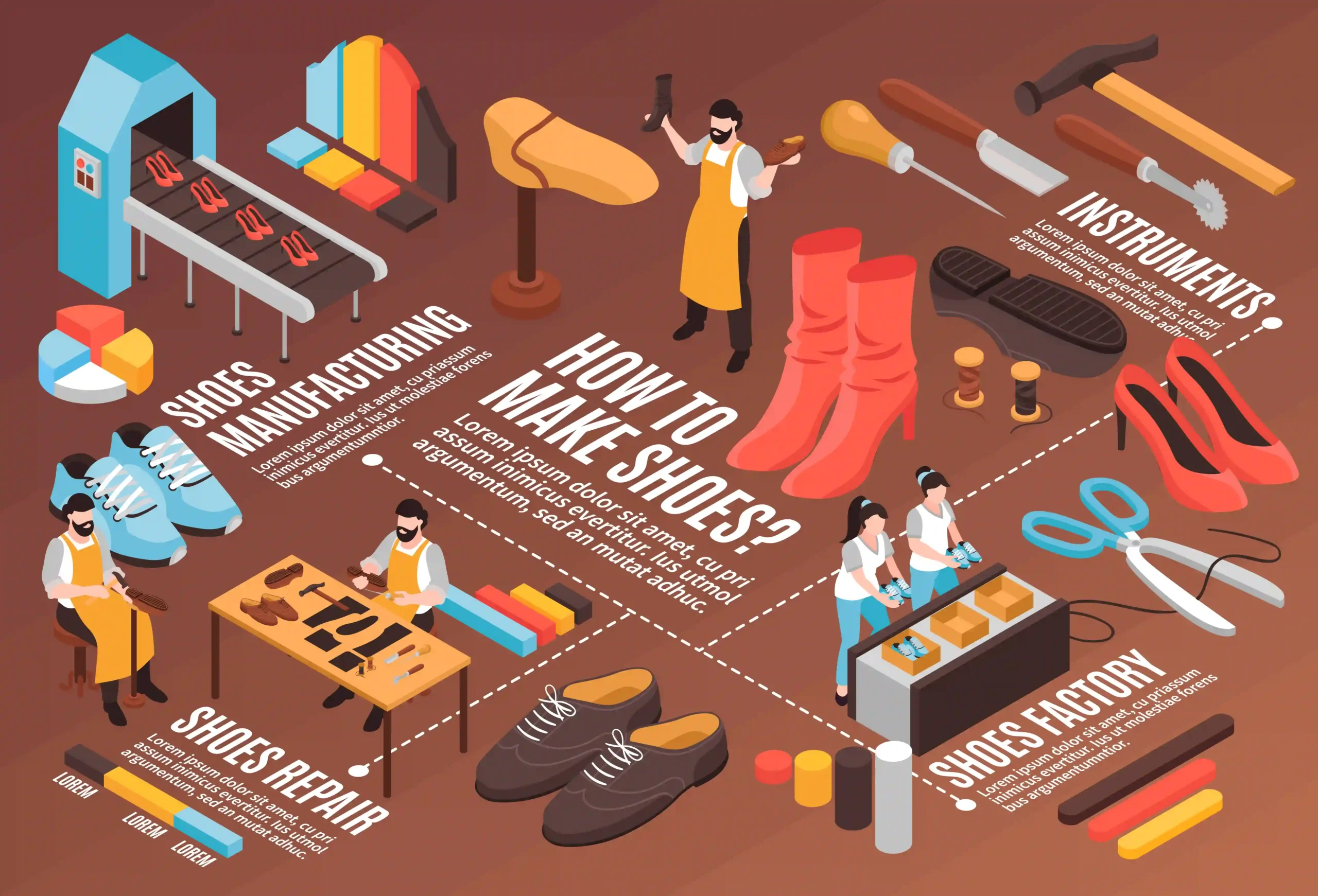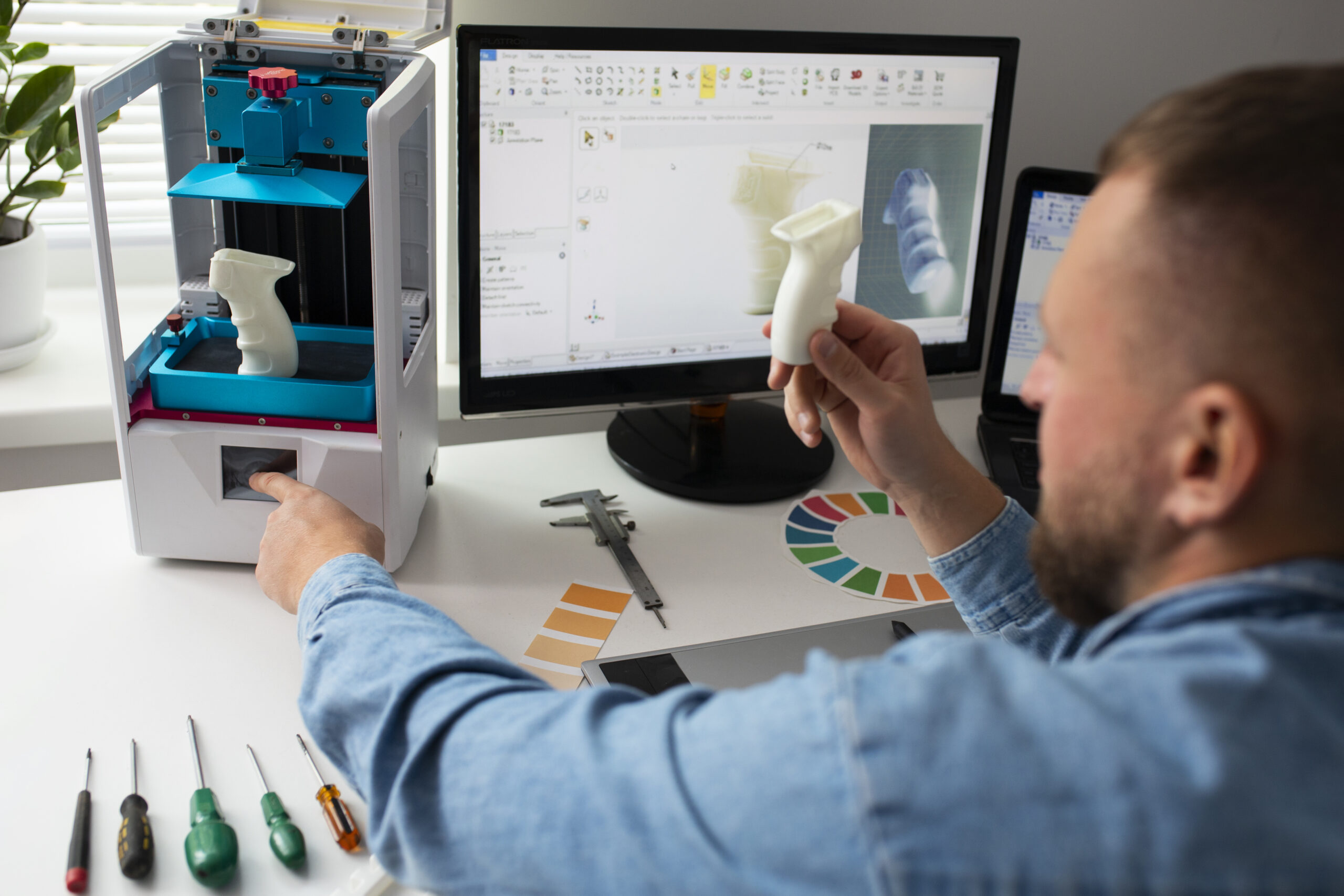In today’s competitive manufacturing landscape, industries worldwide are turning to automation to streamline processes and boost productivity. The footwear industry is no exception. Automating the shoe-making production line has become a crucial step towards improving efficiency, reducing costs, and ensuring consistent quality. But how exactly can the shoe-making production line be integrated with automation? This blog will delve into the process, benefits, and technology behind automation integration in the footwear manufacturing industry.
What is the Shoe-Making Production Line?
Before we dive into the automation aspect, it’s important to understand the traditional shoe-making production line. A shoe-making production line is a sequence of processes through which raw materials are transformed into finished footwear. These processes include cutting, stitching, molding, assembling, and finishing, each requiring precise attention to detail.
In the past, these tasks were performed manually or with the aid of rudimentary machinery. However, as demand for speed and efficiency increased, the limitations of traditional methods became apparent. This is where automation comes into play.

How Can the Shoe-Making Production Line Be Integrated with Automation?
Automation involves incorporating technology to perform repetitive tasks without direct human intervention. In the context of the shoe-making production line, integrating automation means replacing or assisting manual labor with robotic systems, AI-driven machines, and other automated processes to perform tasks such as material handling, stitching, cutting, and packaging.
Key Benefits of Automation Integration
Enhanced Efficiency: Automation significantly increases the speed of production by reducing human error and minimizing downtime. Machines can work 24/7, resulting in higher output and faster lead times.
Improved Consistency and Quality Control: Automated systems follow precise, programmed instructions, ensuring every product is identical in quality and specifications.
Cost Reduction: While the initial investment in automation may be high, it leads to substantial savings in the long run. Reduced labor costs, fewer errors, and faster production cycles lead to overall cost savings.
الاستدامة: Automation enables companies to optimize energy consumption and material usage, reducing waste and contributing to environmentally friendly manufacturing practices.
Real-World Examples
Companies like Adidas and Nike have successfully integrated automation into their shoe-making production lines. Nike’s “HyperAdapt” system uses automated machines for high-precision cutting and assembly, speeding up production times and ensuring that each shoe meets the highest standards. Adidas, on the other hand, employs automated robots to handle tasks such as stitching and material handling, reducing labor costs and improving manufacturing flexibility.
Key Technologies for Integration
Several technologies play a vital role in automating the shoe-making production line. These include:
Robotics and Automation Arms: Robotic arms are used for precise stitching, cutting, and assembling components of shoes.
Smart Sensors and IoT: Sensors help monitor production in real-time, detecting any issues and allowing for immediate adjustments to avoid defects.
AI and Machine Learning: AI can optimize production schedules, predict maintenance needs, and ensure the efficient use of resources.
3D Printing: Some companies are even exploring 3D printing to produce shoe soles and other components, offering enhanced customization and faster prototyping.
These technologies, when integrated into the production line, work in harmony to achieve a higher level of precision, speed, and adaptability.

Footwear Biomechanics and Automation
The role of footwear biomechanics cannot be overstated when it comes to shoe design and comfort. Footwear biomechanics is the study of how shoes interact with the foot and affect movement. By integrating automation, manufacturers can now use advanced technologies to better align shoe designs with the biomechanical needs of consumers.
For example, automated systems can analyze foot shape, pressure points, and gait to create shoes that offer superior comfort and performance. With automation, manufacturers can seamlessly incorporate biomechanical data into the shoe-making process, ensuring that each shoe is tailored to meet the specific needs of its wearer.
Continuous Improvement: The Future of Automation in Footwear Production
The integration of automation is not a one-time event; it’s a continuous process of improvement. As technology evolves, so too will the capabilities of automated systems in the shoe-making production line.
AI-Powered Design and Customization: Future advancements in AI will allow for more customized designs, where shoes can be tailored to individual preferences and foot structures.
Sustainability and Eco-Friendly Manufacturing: Automation will continue to improve the efficiency of recycling processes and reduce waste. Shoes can be made with fewer resources while maintaining high quality.
Smarter Production Systems: Automation in the footwear industry will move beyond just assembly lines and include predictive analytics to forecast trends, optimize inventory management, and further reduce production times.
الخلاصة
Integrating automation into the shoe-making production line is no longer just a luxury but a necessity for footwear manufacturers striving to stay competitive. By improving efficiency, enhancing product quality, and embracing sustainable practices, automation offers a clear path forward for the industry. As new technologies emerge, the potential for further improvements in manufacturing processes will only grow, driving innovation and ensuring that the shoe-making industry continues to evolve.
Frequently Asked Questions
Q1: What are the main benefits of integrating automation in shoe-making?
Automation helps increase production efficiency, ensures consistent quality, reduces costs, and promotes sustainable practices.
Q2: Can small shoe manufacturers integrate automation into their production lines?
Yes, even small manufacturers can implement automation by starting with basic systems like automated cutting or material handling, gradually scaling as needed.
Q3: How does automation improve footwear biomechanics in production?
Automation allows for precise adjustments based on biomechanical data, leading to shoes that are better designed for comfort and performance.
Related Links and Resources
Understanding Robotics in Footwear Production
